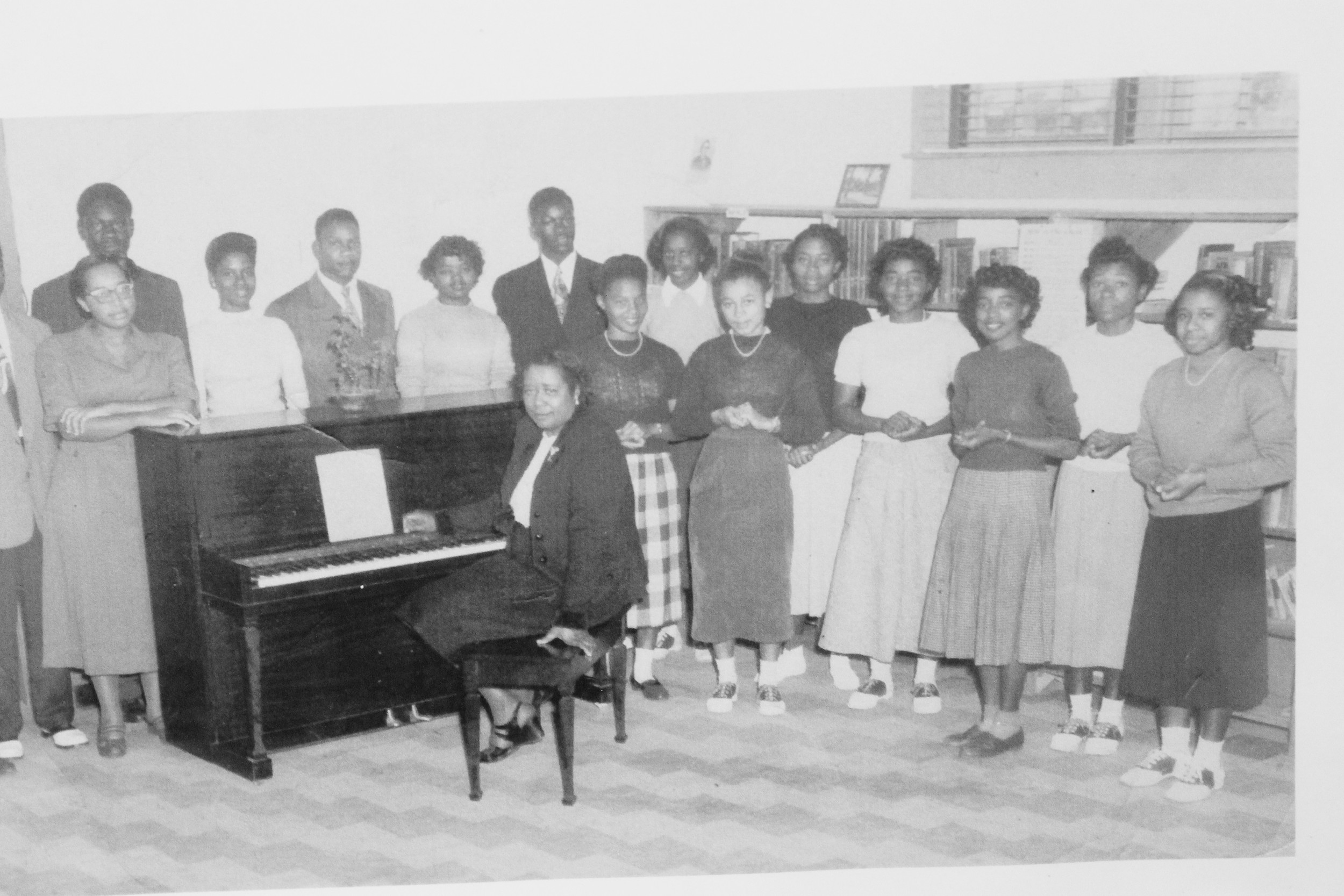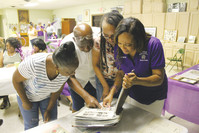Dunbar High School: A look back
Alumni from Clay County’s all-black high school reunite
GREEN COVE SPRINGS – Clay County was a different place when Dunbar High School opened its doors in the early 20th century. Jim Crow laws and segregation served as the law of the land, thus …
This item is available in full to subscribers.
Attention subscribers
To continue reading, you will need to either log in to your subscriber account, or purchase a new subscription.
If you are a current print subscriber, you can set up a free website account and connect your subscription to it by clicking here.
If you are a digital subscriber with an active, online-only subscription then you already have an account here. Just reset your password if you've not yet logged in to your account on this new site.
Otherwise, click here to view your options for subscribing.
Please log in to continueDon't have an ID?Print subscribersIf you're a print subscriber, but do not yet have an online account, click here to create one. Non-subscribersClick here to see your options for subscribing. Single day passYou also have the option of purchasing 24 hours of access, for $1.00. Click here to purchase a single day pass. |
Dunbar High School: A look back
Alumni from Clay County’s all-black high school reunite
GREEN COVE SPRINGS – Clay County was a different place when Dunbar High School opened its doors in the early 20th century. Jim Crow laws and segregation served as the law of the land, thus prohibiting black students from receiving an education at the public schools they attend today.
Today, the alumni of Dunbar meet every two years to remember the place they went to school.
Dunbar High School was Clay County’s “black” high school, serving grades seven through 12. Black students were bussed from every corner of the county to attend. Many of them riding and walking right past schools that were closer to them, like Orange Park High School and Middleburg High School, schools they were not allowed to attend. Clay High School was only two miles away from Dunbar, yet black teens wouldn’t be able to receive an education at that institution until the late 1960’s.
“When I started in 1956, we were so crowded on the bus, Mr. Earl Francis would have to pick us up and go all the way through Middleburg, Orange Park, Doctors Inlet. When we got to Dunbar our bus was like a sardine can,” said Gwendolyn Walker, class of 1962. “That was the way the county did it, we had the worst buses.”
That wasn’t uncommon treatment for the school, despite the good times that the alums recalled on June 17 at a gathering at the old Sacred Heart Catholic Church in Green Cove Springs. Students were under a shadow of racial bigotry that plagued the school board of yesteryear.
“Our school colors where purple and white, but our band uniforms where orange and gray because somebody donated them – we couldn’t do any better, but we had a great band,” Walker said.
Interestingly enough, the same white kids that they weren’t allowed to go to school with, lined the streets to watch Dunbar students perform in parades.
Some students even recalled using damaged text books that had been written in and using subpar learning materials. However, those harsh realities were not enough to stop them from receiving the education and high school experience they wanted.
“It was an experience that I’ll never forget, it was like a family,” said Jency Thomas, class of 1966. “As we grew up and graduated from Dunbar, it was like leaving home.”
“School was different back then, we were closer knit.” Walker said. “The teachers were like your parents.”
Walker definitely understood the family aspect of Dunbar, because she went on to marry her would-be husband of 19 years, whom she met through her six years at Dunbar. That kind of connection was something she had in common with several couples who came out of the school.
To keep the memories of the institution alive, the alums of Dunbar High School reunite every two years to remember where they came from. Each reunion is open to anyone who attended Dunbar, at any point in time. However, each reunion honors specific classes, this year’s gathering honored the classes of 1965 and 1966 who are celebrating 49 and 50 years.
“In order to keep Dunbar alive, this is why this reunion is so important, because even though school is closed, the school lives within us,” said Henrietta Francis, class of 1966 and a former “Miss Dunbar.”
“We have so many people spread out all over the country and they want to get together with their classmates,” said Barbara Garner, president of the Dunbar Reunion Committee and member of the class of 1959. “It’s a pleasure to do this, as long as we can and hopefully we’ll be around, maybe when we’re gone somebody else will pick it up.”
This year’s Dunbar reunion began with a meet and greet for attendees, continued with an afternoon picnic the next day, and ended with a banquet.
The Dunbar alumni recalled memories of their time at the school, but it wasn’t just students who came to the celebration, there was even a teacher from the school as well.
“My first years in Clay County were spent in a two room schoolhouse in Orange Park, Miller Elementary, then I moved to Dunbar,” said Wilhelmina James, who taught at Dunbar. “All of my teaching experience was in Clay County, and I retired after 38 years, and I’ve enjoyed it all. Now I get to be with the young people, who are now adults and I’m going to enjoy talking to them this evening.”
While Dunbar provided many great memories, some still harshly remember why they had a separate school to begin with. The experiences that they had at Dunbar have been a major influence at how they see the world today.
Walker remembered how kids at Dunbar used to be actively involved in plays, clubs, sports and school activities, something that she doesn’t feel is the case anymore.
“There’s a good side and a bad side [to integration], when we were having school, we prayed and honored God. When you see the schools now, you see one black kid on the cheerleading team, two or three black kids in all except for the basketball and football teams, they want a win so they’re going to put those black boys out there. Other than that, it’s been slow for our children, but it’s getting better,” Walker said.
Despite the setbacks and the quality gaps that students faced, many of Dunbar’s alumni went on to reach great success. Among them are doctors, educators, clergymen and medical professionals.
“They taught us a lot of things that we needed to compete, even though it was a segregated school,” said Dr. Larry Richardson, class of 1965. “Our teachers knew what we needed to compete in the world, a lot of Dunbar students did well in college, a high percentage went to college.”
Richardson was one of two clinical psychologists who attended the reunion.
One common theme among reunion attendees was the sense they had a great time at Dunbar, even in the midst of a county that did not fully accept them.
“It was a good experience, we didn’t have what the children today have, the stuff that children are doing today, we dare not did that,” said Sandra Person, class of 1965. “Our teachers were compassionate, strict and they disciplined us.”
The last class of Dunbar High School would end up being 1967, when Clay County schools were racially integrated and its students were transitioned into area high schools. Guests said the early years of that transition were harsh, even leaving some alumni glad they graduated under segregation.
“My brother was in the class of 1968. To have gone to Dunbar, then go to Clay High for that last year; those are the stories you should hear.” said Barbara Aldridge, Class of 1966. “They spent their first year being called the ‘N word’ and having to go to class with students who didn’t want them there and teachers who didn’t want to teach them. For me, I feel like we had a better advantage. They say it takes a village to raise a child, and my children didn’t have that.”
Now, nearly 50 years later, Dunbar’s doors have long been closed just like the other black schools in Clay County – present day Bannerman Learning Center, a present day Middleburg community center, and present day Grove Park Elementary School (formerly Miller Elementary). Dunbar is now the Augusta Savage Community Center of Green Cove Springs. Even all the years later, the former site of Dunbar is still a community gathering place for youth in the predominately African American neighborhood where it sits.
The gathering of Dunbar alums is a living representation of their alma mater, “Oh dear Dunbar High, we love thee very true, we’ll honor thy name, and do what’s best for you. We’ll strive and fight for all of our godly rights. Our aims and our mights will stand for purple and white. Our heads, hands and hearts will never let us part. We’ll always stand for faith in God and man,” the alma mater reads. “We’ll fight, fight, fight forever for you, we love you, yes, we do.”











